This site uses only a few technical cookies necessary for its operation. By continuing to browse, you accept their use.
To find out more...
To find out more...
For well opened (puffed) cakes
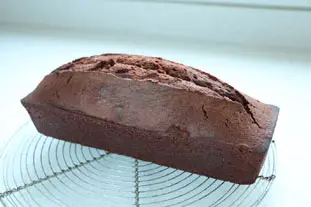
It's always nice to have a well puffed up cake after baking, not only will it taste good but it looks great too.
Let's see how to get this beautiful shape almost every time.
Let's see how to get this beautiful shape almost every time.
35 K 4.2/5 (28 reviews)
Keywords for this post:CakeCakePuffed upNibblesLast modified on: January 23th 2019
For well opened (puffed) cakes
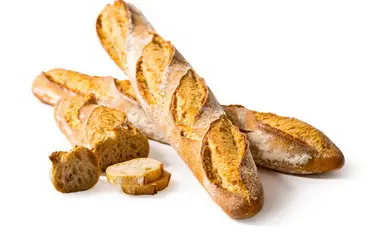
Have you noticed that when you buy bread, a baguette for example, there are openings on the top of the loaf called "grignes"? They're there because when the dough is put in the oven, the baker "blades" or"nibbles" the top with a very sharp blade, so that when the bread is baked, it opens up well, and has that elegant, appetizing appearance typical of French breads.
How does it work? Quite simply, the stroke of the blade on the dough creates a weakness on the surface, and when the bread swells in the heat of the oven, it will spread in the direction of this weakness, thus accentuating the opening created by the initial blade stroke.
If the baker doesn't blade, the bread bursts during baking, or rather splits a little anarchically, but this can also be desired for a "rustic" style, as shown here:
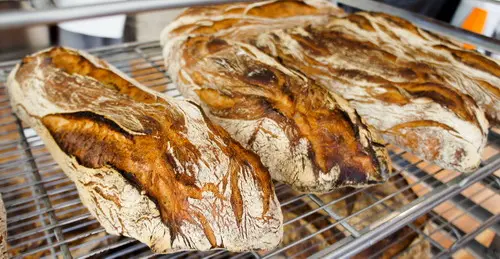
In short, all this to say that if you don't blade your dough, the bread is less beautiful, but that's not the whole point of this post.
In fact, and this isn't obvious, but it also applies to cakes like cake or 4/4. During baking, the same phenomenon occurs as with breads, except that water vapor pushes the top of the cake open to varying degrees. Now, we all want to have beautiful cakes with open tops, so how do we go about it?
Well, almost like a baker, we're going to sift the dough, but as we're not dealing with a firm dough, but a very soft one, we have to be a little tricky.
Here's the idea:
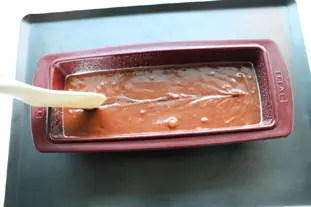
- You bake your cake as usual, pouring the dough into a mould.
- Just before putting it in the oven, dip a spatula or a simple knife in a little neutral oil (peanut oil, for example).
- You trace a line down the middle of the dough with the oiled spatula (note that the groove remains thanks to the oil)

- Bake as usual
And that's the kind of result you'll get.
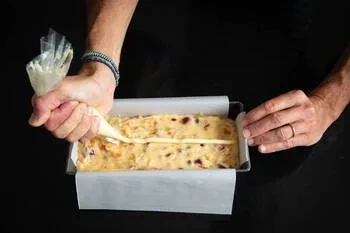
Pastry chefs do things a little differently: using a very thin piping bag, they place a thin bead of butter on top of the pastry.
As you can see, the principle is still the same: all you have to do is create a weakness in the dough, which will be transformed into a nibble under the action of the cooking gases,CO2 for bread, and steam for cakes.
To sum up: if you want a mouth-watering, open-topped cake like this one, you need to "split" the top with a lightly oiled marysee.
Lasts posts
Butter vs. grease
We often read in a recipe where a pastry is put into a mould that, just before pouring, the mould should be buttered or greased. But what's the difference between these 2 terms?December 1st 20251,0155
Getting out of the fridge early
Very often when you're cooking, you need to take food or preparations out of the fridge, to use them in the recipe in progress. There's nothing tricky about this: you just take them out of the fridge and use them, usually immediately, in the recipe. But is this really a good method?November 24th 20251,1365
Who's making the croissants?
When you look at a bakery from the outside, you naturally think that in the bakery, the bakers make the bread, and in the laboratory, the pastry chefs make the cakes. It's very often like that, with each of these professions having quite different ways of working, but sometimes there's also one...November 23th 20251,027
Oven height
When we put a dish or cake in the oven, we naturally tend to put it on the middle shelf, and that's what we usually do. But in some cases, this position and height can be a little tricky, so let's find out why.October 8th 20252,7845
The importance of sieving
In recipes that use a fine powder (flour, powdered sugar, etc.), you'll often see the advice to sift before using it. To sift is to pass the powder in question through a sieve (a very fine strainer) before incorporating it into your recipe. It's often advice, but is it really useful?September 3rd 20257,5483
Other pages you may also like
What is the difference between bakery and patisserie?
This is a question that you may well have asked yourself and which I will attempt to answer. In France the two trades of "boulangerie" (bakery) and "pâtisserie" (patisserie and confectionery) have always been quite distinct, but where exactly do the boundaries lie? .February 7th 2017134 K 14.1
Candied fruits: don't get ripped off
Do you like candied fruit? You might like to nibble a handful or add it to a recipe, like a classic fruit cake or delicious Italian specialities like panettone or sicilian epiphany pie.June 21th 201767 K 24.2
A few tips for effective kneading at home
When you have to knead dough for bread or some other recipe, you may well use a food processor or the type of machine known as a stand mixer. The best-known brands are Kenwood and KitchenAid. They are useful tools, but here are a few tips to help you get the best out of them.June 23th 2021284 K 23.8
The bitterness of endives
As I write these lines, we are entering the endive season, and if you like it, it's time to enjoy it, if possible with your local producers. Endive is good, but the reproach that is often made of it, and children in particular, is: "It's bitter! And it is (somewhat) true of course, endives...February 9th 201914 K4.9
Drawing a pattern in pastry
Often in the kitchen, in pastry-making, or in baking, we need to trace a pattern on a pastry. It's just a question of aesthetics but it has its effect after baking on a galette, pithiviers, pâté en croute (terrine in a pie crust), etc.May 23th 201935 K4.1
Post a comment or question
Follow this page
If you are interested in this page, you can "follow" it, by entering your email address here. You will then receive a notification immediately each time the page is modified or a new comment is added. Please note that you will need to confirm this following.
Note: We'll never share your e-mail address with anyone else.
Alternatively: you can subscribe to the mailing list of cooling-ez.com , you will receive a e-mail for each new recipe published on the site.









